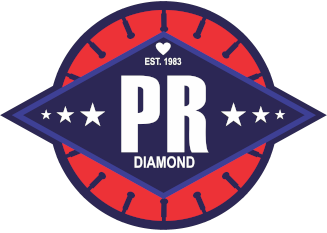SPECIALTY BLADES, COMBO BLADES, OR MULTIPURPOSE BLADES? WHICH IS BEST?
You read this info below or just read this answer: IT DEPENDS
For many years, the diamond tool industry has been very scientific on blade design, speed efficiency, and life. Generally speaking, many larger companies or companies that focus solely on cutting/coring favor blade speed over blade life. Their logic is based mostly on labor cost, where by, faster cutting saves money to labor expense. That doesn't mean they are purchasing the cheapest diamond tools that just burn up. But, they are paying attention to the best life matched with the best speed. By definition, diamond tools have been lumped into three categories:
Good (economy)
Better (premium)
Best (supreme)
There is logic to purchase from the various categories depending on usage and needs.
Good (economy) blades are a reasonable investment when you; use a blade infrequently; You are concerned with or have experienced theft; You are prone to user damage or user error.
Perhaps you purchase economy blades because you believe that all diamond tools are the same and you don't believe the science. If you believe all blades or bits are the same, then you might want to stop reading now…..you won't agree with me and it will waste your time.
Blades can look identical but be very different. Differences vary in diamond concentration and content, in that content is a variance of different grades of diamond. It can be hard to distinguish blades out in the field. You may be able to identify, for instance, an Asphalt blade because there may be clues. A special drop segment or insert, or a combo of both, but only blades that are 12" and larger (most of the time). Core bits have virtually no clues to help. Sometimes paint helps, and so does a magic marker, but these wear off. We blade manufacturers and suppliers haven't been good about this identification because it's hard to do. In fact, we are just in process of stamping out directional arrows in the cores versus laser or etch (another Blog topic coming). Ever used a concrete blade in asphalt? If you have experience this then you know it generally burns up pretty fast. Ever done the opposite, using an asphalt blade in concrete? Wow, that can really suck if you have done it; the blade will perform poorly by coming out of the cut and or the resistance will be significant to not perform or glaze over.
What's the solution? Most we have seen, mark their blades with a magic marker over and over. Other blogs have talked about this issue. Combined with theft, usage issues, time it takes to change a blade, convenience, and initial view of cost, combo blades and multipurpose blades have really come into the market during the past 5 years. A combo blade by definition is designed to cut two materials. Most are made with two different segments, hence the designation "Combo", and most combo blades have segments for concrete and asphalt. Is this the most efficient use of pure cost? No. Don't believe me? No problem – the science is there – go research and draw a conclusion. A blade designed for a specific material will always outlast any combo blade. However, when adding in other aforementioned factors, it may be a viable option. There may also be other factors when its appropriate to have a combo blade. This includes curb cutting, with an asphalt/paved street and concrete or granite curbs. This can also include overlay or underlay with asphalt and concrete being mixed. In this case a combo blades sounds like a requirement. Yes, I believe it's the best way to go.
So, what's a multi-purpose blade then? Well it can be (and often is) marketed as a combo blade, but usually its means 3 different materials, such as concrete, asphalt, and masonry products. In this case, you may see (or should see) 3 different segments on the blade. Most combo and multipurpose blades are marketed the same, so it can be more difficult to know what you are actually getting.
What else? Aggregate can play a major role .. If you cut or core by the Mississippi River (as an example) then you know how fast your diamond blades and core bits burn up. That river rock, sand and such is very abrasive and just kills the life of any blade or bit. In this case, a combo or multipurpose blade can at times be very effective. In addition, many new additives have been introduced to concrete and asphalt to prolong life and durability. Generally, many new additives cause the blade life to be lower, as they reflect abrasive properties or qualities.
At PR Diamond, we have combo blades, multipurpose blades and we make and supply custom made blades to order for the more challenging scenarios.
As I said at the beginning, what blade is best? The answer is, it depends. If you can match the material to the blade, concrete blades for concrete cutting, asphalt blades for asphalt cutting, etc. that is always the best bang for the buck, even if you must invest in different types of blades. However, the emergence of options is always good for the end user and as shown here, alternative options have their place in the market. This market for non-custom made blades has blown up in the past 5 years.

